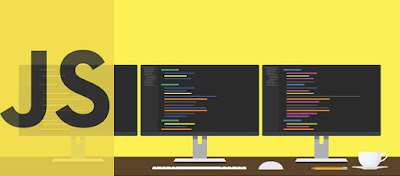The websites and web applications nowadays need to provide information in an appealing and easy-to-understand way. The web developers can easily enhance a website’s user experience by presenting information through interactive charts. They even have option to choose from several open source and licensed charting software according to their preferred programming languages.
The JavaScript programmers can create interactive and appealing charts by using popular charting libraries like Google Charts, D3.js, ChartJS, Chartist.js, Chartkick, Smoothie Charts, Float and Fusioncharts. Some of these JavaScript charting libraries are open source and free, whereas others are available as licensed software.
Also, these libraries differ from each other in term of features, supported chart types, and rendering technology. Hence, a single JavaScript charting tool may not meet varying data visualization needs of individual projects. The web developers must compare these JavaScript libraries based on a number of parameters to choose the right charting software.
7 Factors to Consider while Comparing JavaScript Charting Libraries
1) Paradigm
Like other software development tools, JavaScript charting libraries also follow two distinct paradigms – declarative and imperative. The libraries following declarative approach require developers to select the chart type and set up the configuration option. The tools render interactive charts based on the input provided by web developers. On the other hand, the charting libraries following imperative approach allow web developers to visualize data by writing code and following specific steps. However, they simplify data visualization by providing helper methods. The web developers need to choose the right paradigm according to their skills and expertise.
2) Supported Chart Types
Each JavaScript charting library allows you to present information through a variety of charts – line, pie, bar, area, scattered and bar. But the types of charts supported by individual libraries differ. For instance, most widely used JavaScript charting libraries do not support radar, network, and funnel charts. Likewise, some libraries lack the capability to render 3D charts. It is always important to provide information through the most appropriate chart to keep the website visitors engages. Hence, the developers must keep in mind supported chart types while comparing these libraries.
3) Customization Options
The charting libraries make it easier for developers to present information and data through various types of charts. But the developers still need to customize the charts to make the information easier to understand. Some charting libraries do not allow users to customize the charts according to their precise needs. Hence, the developers must opt for charting libraries that allow them to customize various aspects of chart – title, legend, responsiveness, zoom, and tooltip.
4) Rendering Technologies
Each JavaScript charting library renders charts through specific technologies. For instance, some libraries render charts through HTML5 Canvas, whereas others render charts through Scalable Vector Graphics (SVG) and Vector Markup Language (VML). SVG is a XML-based vector image format, whereas VML is a XML-based file format. On other hand, HTML5 Canvas comes with capability to render charts in immediate mode. At present, the chart rendering technologies are not supported by each browser. Hence, you must compare the rendering technology used by each charting library according to the targeted browsers.
5) Databinding
Most widely used JavaScript charting libraries do not support databinding. Only selected libraries currently allow developers to bind the charts directly with data source. The option enables developers to update data asynchronously in the charts. Also, they can fill the data asynchronously after initializing an empty chart. When a charting library supports databinding, it becomes easier for developers to render charts dynamically with updated information. The web developers must check if the charting library supports databinding to render data-driven charts.
6) License
A developer has option to choose from both open source and licensed JavaScript charting libraries. The licensed charting tools provide several additional features and supports complex chart types. But a developer has to incur additional expenses to avail the features provided by commercial charting tools. On the other hand, the open source JavaScript charting libraries help developers to visualize data without increasing project overheads. Hence, the JavaScript developers must check the license of the library according to their budget.
7) Support
The web developers can consider licensed JavaScript charting libraries to avail prompt maintenance and support. The open source libraries are also supported by active communities. But certain open source JavaScript charting libraries lack adequate support. There are even a number of libraries which have not been updated for a long time. Hence, it becomes essential for web developers to check if the JavaScript charting library is maintained and supported proactively by the community.
On the whole, a web developer has option to choose from several JavaScript charting libraries. But he must evaluate the pros and cons of these widely used JavaScript charting libraries according to precise data visualization needs of individual projects. Also, he needs to compare these libraries based on key parameters like features, interactivity, and compatibility.

No comments:
Post a Comment